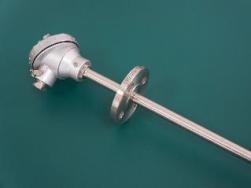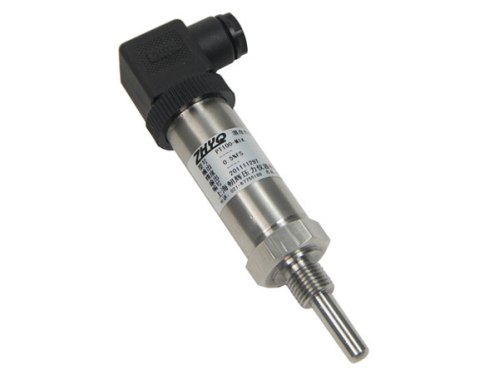Categories: Novice electricians, Industrial electrician
Number of views: 10109
Comments on the article: 0
Industrial temperature sensors
 Numerous technological processes requiring temperature control occupy not the last place in industry. Temperature measurement of gases, liquids, bulk powders and solid surfaces - each of these cases has its own characteristics, and for correct measurements it is important that the measurement method is consistent. There are many temperature sensors created on the basis of various physical laws and used for these purposes. There are both special and universal sensors.
Numerous technological processes requiring temperature control occupy not the last place in industry. Temperature measurement of gases, liquids, bulk powders and solid surfaces - each of these cases has its own characteristics, and for correct measurements it is important that the measurement method is consistent. There are many temperature sensors created on the basis of various physical laws and used for these purposes. There are both special and universal sensors.
The most widely used in industry today are thermoelectric sensors capable of operating in the temperature range from -200 ° C to + 2500 ° C and even higher. These are reliable, high-precision devices, often used to automatically control processes.
The basis of the first type of such sensors is thermocouplelies the phenomenon of the occurrence of thermopower in a conductor, the ends of which have different temperatures. A thermocouple combined with an electrical measuring instrument forms thermoelectric thermometer.
Structurally, thermocouples can be performed in different ways:
-
uninsulated conductive wire with open contact;
-
insulated with open contact;
-
on a self-adhesive basis; in a ceramic shell; in a ceramic case with integrated terminals.
Each embodiment is convenient for solving specific problems.

For example, a non-insulated thermocouple is applicable at temperatures up to 2300 ° C, and is used in biophysics and medicine for point measurements, but is not suitable for liquid and aggressive environments. An insulated thermocouple with an open contact can measure temperatures up to 500 ° C, and is already suitable for measuring temperatures of surfaces and gases, since the shell of glass or Teflon gives it chemical and thermal resistance.
Self-adhesive insulated thermocouple is suitable for the range from -60 ° С to + 175 ° С, and is convenient for mounting on various surfaces. The insulated thermocouple in a ceramic shell is resistant to abrasion, has a flexible structure, and can be used in thermal installations, thermal furnaces and machine tools, at temperatures up to 1100 ° C.
Industrial thermocouples in a ceramic case with integrated terminals (see figure) are designed for installation in a sleeve, have corrosion resistance, and therefore are suitable for harsh industrial conditions and temperature measurements up to 1150 ° C, and various types of sleeves can be used with such a thermocouple.

The second common type of industrial temperature sensors are sensors based on the phenomenon of a change in the resistance of a conductor when its temperature changes - resistance thermometers. The set of such a device includes a sensing element, a measuring device and connecting wires.
The first embodiment of the sensing element is a metal wire made of copper or platinum, which is wound on a frame of insulating material, and placed in a protective casing. Such resistance thermometers are suitable for measuring temperatures from -200 ° C to + 700 ° C.
The second option is semiconductor sensor from a mixture of oxides of manganese, copper, nickel, magnesium, cobalt, etc. The mixture is crushed and sintered together with binders, a kind of thermistor is obtained in the form of a small washer, cylinder or bead, into the ends of which contacts are burned. Serially manufactured industrial thermistors can be used to measure temperatures from -90 ° C to 180 ° C.
Each type of sensor has its own unique properties that allow you to solve specific problems in the best way. So, platinum-based resistance thermometers have very high stability and accuracy.Thermistors are affordable and very sensitive, and thermocouples, in turn, are resistant to various environmental conditions, accurate and stable over a wide temperature range.
Read also:HEMZ series circuit breakers A3700
See also at bgv.electricianexp.com
:
